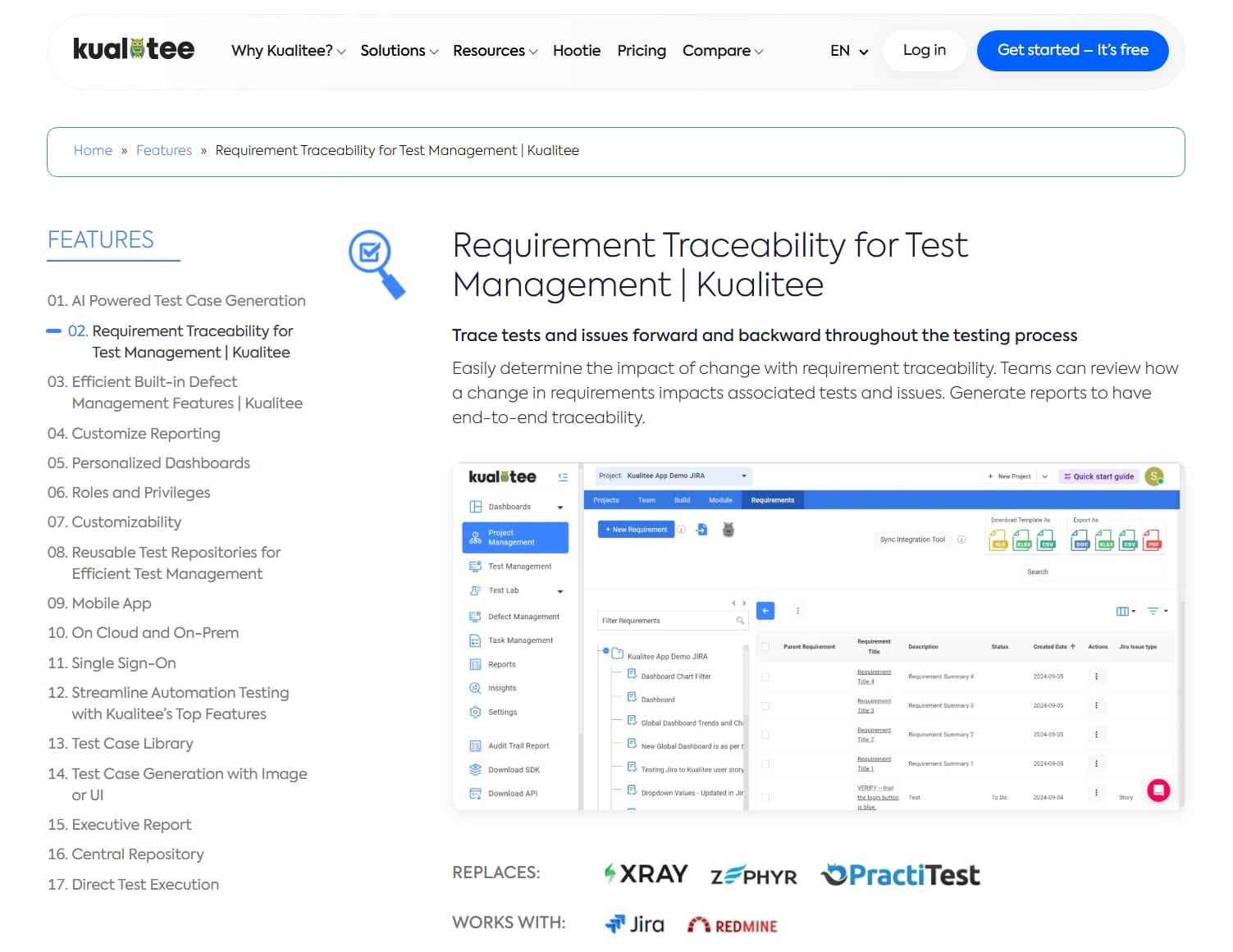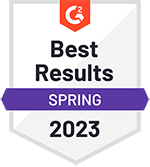Since COVID, hybrid working has become quite popular. People realized that having some guys in a team on-site and some working remotely is more convenient. It offers flexibility and saves resources. Not to mention the access to diverse talent.
But still, managing collaboration and communication across different functions and locations is a challenge. Especially for the people in the software testing scene.
This is where a requirement management software comes in handy. It provides a centralized platform for clear communication and coordination. With such a tool, hybrid QA teams are empowered to work in unity towards the shared project goals.
To explain this better, we’ve come up with this article. Today, we’ll delve into how a requirement management software drives effective cross-functional collaboration in hybrid teams. And how it ensures higher productivity and superior product delivery.
What is a Requirement Management Software?
As mentioned earlier, it’s a centralized platform that’s designed to capture, organize and track project requirements easily. From conception to delivery, it can be used by everyone on the team to access requirements at any time.
Not just that, a requirement management software also allows stakeholders to document business needs. They can add functional specifications and compliance criteria consistently and transparently.
With such software, ambiguity is reduced, and all parties are aligned around shared goals. It’s a necessity in today’s software testing scene.
Distinct Challenges Unique to Hybrid QA Teams
Hybrid QA teams are a bit different from the co-located groups of workers. There are several things that complicate collaboration for them. Some of which are:
- Geographical dispersion: The team members might work in different countries or even continents. They have to deal with time zone differences, which obviously disrupt real-time discussion.
- Communication barriers: Remote work often results in fewer conversations and informal catch-ups. These hinder understanding.
- Diverse Workflows: Different departments might adopt Agile, Waterfall or hybrid methodologies. If this happens, there can be a sort of complexity in aligning processes.
- Technology fragmentation: You’d have no idea what tool the worker on the other side of the world is using. Multiple tools without integration can lead to disconnected information. In turn, it becomes hard to get a clear project view.
Together, these obstacles highlight why hybrid teams need advanced tools. Especially for managing requirements, which form the foundation of successful project execution.
How Does a Requirement Management Software Make Cross-Functional Collaboration Better?
The following are some ways it can do that.
1. Centralized Repository for Clear Communication
The first advantage that comes with a requirement management software is that it establishes a centralized repository. One that’s accessible at any time by the team members and stakeholders.
This shared environment helps ensure everyone can view the same up-to-date documentation. From the business analysts and product owners to the developers and testers.
It completely eliminates the reliance on fragmented communication channels. Such as emails or informal chats, which often lead to missed or misunderstood information.
2. Real-Time Updates and Version Control for Alignment
Members of a hybrid team don’t usually all work at the same time. This makes real-time updates and version control very important.
A requirement management software keeps every change logged and visible with top-notch versioning systems. Due to this, conflicting edits or confusion about which requirement version is the latest are prevented.
Furthermore, stakeholders receive notifications about modifications or approvals needed. QA teams can respond quickly despite time zone differences. These audit trails also enable trust and improve decision-making by ensuring everyone refers to the latest and approved requirements.
3. Streamlined Feedback & Collaboration Approval Workflows Save Time
A good requirement management tool offers structured feedback loops. They also allow commenting and attaching supporting documents. Along with tracking approvals directly within the platform.
This transparency quickens the review process. The need for frequent, lengthy meetings is reduced as well.
When teams get clear, traceable conversations related to specific requirements, they have everything documented. It reduces misunderstandings and sets clear expectations for deliverables.
4. Requirement Traceability
One of the most prominent capabilities that modern tools offer is requirement traceability. It’s the ability to link requirements to all associated project items such as design documents, test cases and delivery milestones.
This linkage enables QA teams to:
- Understand how changes in business needs impact testing and development.
- Validate complete coverage of requirements in test plans.
- Quickly identify risks and gaps in scope or coverage.
- Facilitate cross-team impact analysis that improves coordination.
Requirement traceability transforms raw data into actionable insights. It sets the path for better collaboration by making dependencies visible to all functions.
5. Improved Accountability and Clear Role Definition
It’s obvious that hybrid environments usually have less face-to-face oversight. So, clear ownership and status tracking of requirements is of utmost importance.
A requirement management software enables teams to assign tasks, define roles, as well as update statuses. This instills accountability and clarity.
It also prevents bottlenecks by revealing stalled work or unaddressed feedback. Team leads can make sure that follow-ups happen timely manner to maintain project momentum.
6. Smooth Integration with Existing Tools Minimizes Disruption
Most software testing teams already rely on various productivity and development tools. For example, Jira, Slack, Confluence and other DevOps pipelines. A requirement management software offers integrations with these platforms.
These integrations bring together the requirement management processes with existing workflows. Due to this, the need for tool switching is minimized, and information continuity across hybrid teams is maintained.
The whole adoption process becomes way smoother, and collaboration becomes more fluid.
7. Flexibility to Support Agile, Waterfall and Hybrid Project Methodologies
Cross-functional QA teams may follow varying project management styles. However, this depends on the phase or discipline they’re working in.
Still, though, a good requirements management tool accommodates this diversity. It supports sprint-based Agile backlogs and traditional requirements documentation for Waterfall projects.
This flexibility ensures that all team members can collaborate on one platform. There’s no need to force a one-size-fits-all methodology. Friction is reduced and adoption is increased.
8. Data-Driven Insights for Continuous Improvement
The centralized requirements create opportunities for better analytics and customizable reporting. Leaders gain clear visibility into velocity and bottlenecks. They can see the requirement coverage, defect trends and collaboration patterns from anywhere.
These insights contribute to making informed interventions and continuous improvements in how hybrid teams work together. Gradually, this increases efficiency as well as quality and team satisfaction.
How Kualitee Provides Requirements Management and Traceability for Hybrid QA Teams
Kualitee is an example of a modern platform that not only offers built-in requirements traceability integrated into its test management suite. But also provides comprehensive requirements management capabilities.
This combination enables QA teams to manage, organize and monitor requirements efficiently alongside test cases and defects. All within one platform.

With Kualitee, QA teams can:
- Create or import detailed requirements into its centralized repository.
- Link requirements directly to test cases and defects. And then observe both forward and backward traceability to thoroughly understand the impact of changes. This can be done throughout the project lifecycle.
- Generate comprehensive reports that provide end-to-end visibility. From initial requirements through test execution to issue resolution. Informed decision-making is supported.
- Maintain transparency and accountability across distributed teams. This is especially important for hybrid teams working asynchronously across departments and locations.
Kualitee supports the complex coordination needs of hybrid, cross-functional QA teams since it offers requirement traceability and management as its core features. It helps them ensure quality and delivery goals are consistently met. All while minimizing gaps between requirement definition, testing and defect management.
Closing Thoughts
A requirement management software massively improves cross-functional collaboration in hybrid QA teams. It provides a centralized platform for clear communication and real-time updates. The workflows are streamlined as well.
Such software also addresses the unique challenges faced by geographically dispersed teams. These challenges include communication barriers and technology fragmentation.
By facilitating requirement traceability and accountability, such a tool enables effective teamwork and improved insights. Platforms like Kualitee exemplify how efficient requirement management can support the complexities of hybrid environments.













































